
Lions truly are some of the most amazing creatures, as the multitude of lion facts will attest to. You will find that there are hundreds of fascinating facts about lions.
This majestic creature truly is a marvel of nature, and you will find that the fascinating lion information below will teach you everything you need to know about these rulers of nature. Here is everything you need to know about lions: What do lions eat, lion vs tiger, lion habitat, African lions, Asiatic lions, physical characteristics of the lion, lions social life, lions mating and a lot more.
This page goes well together with another page concerning lions: Free Lion Pictures.
Lion genus and lion family
The lion is of the family Felidae, (cat-family), and its genus is Panthera.
The lions latin name is Panthera Leo.
The other 3 big cats in this genus is the leopard (Panthera pardus), the tiger (Panthera tigris) and the jaguar (Panthera onca) , where the tiger is the largest of these 4 big cats.
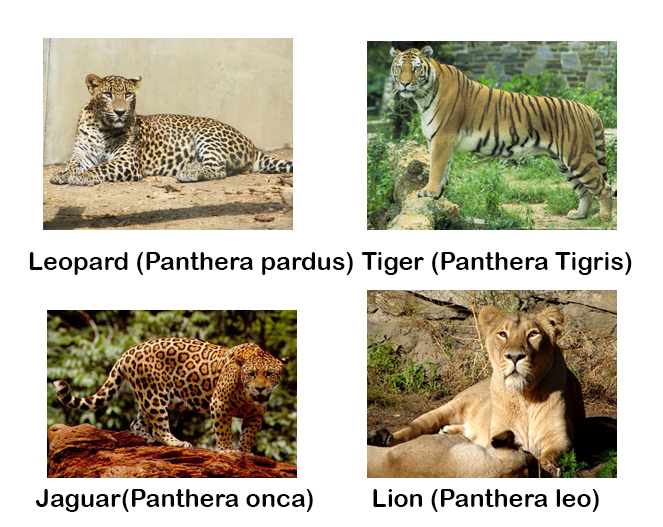
Until around 10.000 years ago, Panthera leo was widespread in most of Africa, from Western Europe to India (Eurasien) and also living in both Nort and South America.
The American lion, Panthera leo atrox, as well as the lion living in most of Europe and North India became extinct after that period.
Today we find most lions in Africa, the African lion, and a small group (ca. 300) of lions in India, the Asiatic lion (Panthera leo persica). The Asiatic lion seems to have split from the African ancestors about 100.000 years ago.
Apart from the Asiatic lion there are 6 living subspecies of lions, but the genetic differences are so small, that you can actually talk about 2-3 subspecies living in Africa today. If you want to read more about these subspecies, please go and have a look at the page http://en.wikipedia.org/wiki/Panthera_leo
Random Lion Facts

You can actually hear a lion’s roar up to 8 kilometers away.

They are the only members of the cat family with a tassel or tuft at the end of their tail.

The newborn cubs don’t have this tassel, it develops around 5-6 months of age.

Lions prefer to hunt at night and dawn, thanks to their eyes that can see well in the dark.

Lions will only kill one animal for every five tries, so they end up scavenging for their food.
Lion Young
One of the most amazing lion facts is that both the African lions and the Asiatic lions are born completely blind.
They are usually born in litters of between two and four cubs, though there have been a few litters with as many as nine cubs born.
The baby lion weighs roughly 45 kilograms (1 pound), and is only about 30 centimeters (1 foot) in length.
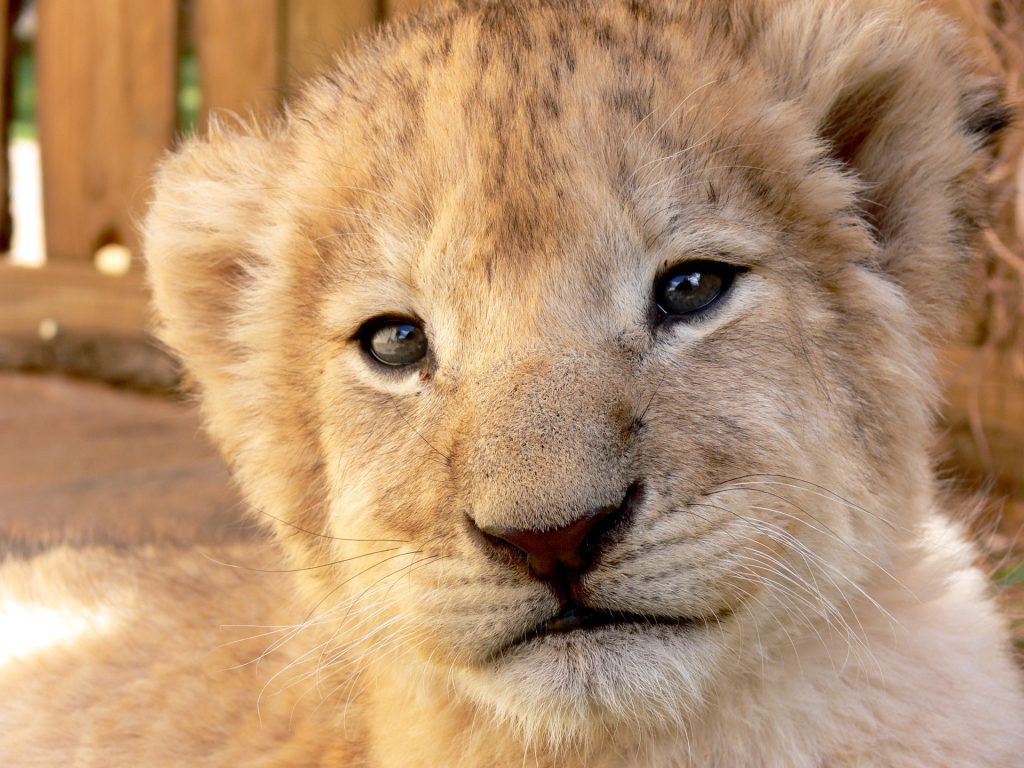
The cubs are totally covered in a soft, downy fur when they are born, and often newborn lions will even have spots which makes a great camouflage. These seem to disappear later, but eventually you can see them on legs and the belly of the grown up lioness.Their eyes open once they reach the age of 2 or 3 weeks old, but their eyes often don’t work properly until they have been open for another week.
The lion cubs’ milk teeth usually grow in once they reach three weeks old, and they begin to eat regular food roughly a week later, but most lion mothers won’t wean their cubs until the cub has reached 4 or 5 months old.
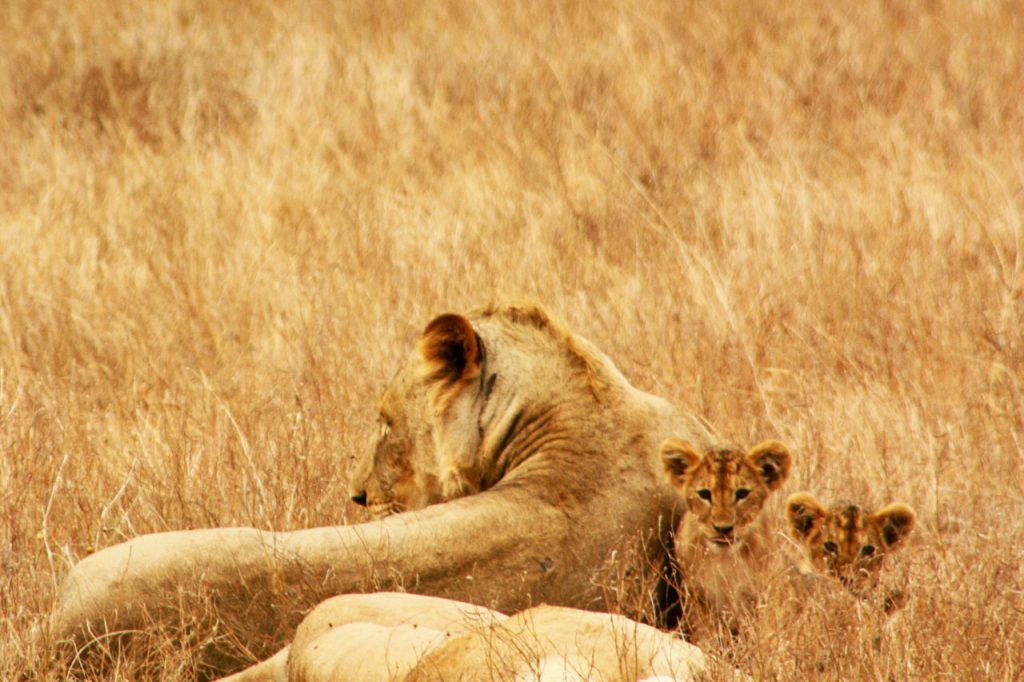
The mother usually keeps the cubs separate from the pride for the first weeks of their lives, moving them from one place to another to avoid the scent to reveal their den for enemies, but eventually introduces the newborns to the rest of the lion pride.
Any lactating female may suckle the lion cubs once they have been introduced to the pack, and this actually helps to promote a bond between the lion cubs and the adults.
Roughly only 1 out of every 8 cubs survive their childhood, for a number of reasons.
Many cubs die during the incredibly painful teething period, while others will die as their mother neglects to care for them.
When a new male takes over a pride, he will usually kill all of the cubs in a pack so that only his offspring will be in the pack.
Cubs only get fed once the adults have their food, and thus many cubs starve to death when there is not enough food. Sometimes male lions will let the cubs share his food, but most female lions will force the cubs to wait until they have eaten. This might seem awfully cruel, but it is actually understandable when you think about it:
If the adult lions don’t get enough food, they will get weak and won’t be able to hunt for more food, as well as they won’t be able to protect the cubs. So that will create a situation even worse for both the cubs and the adult lions.
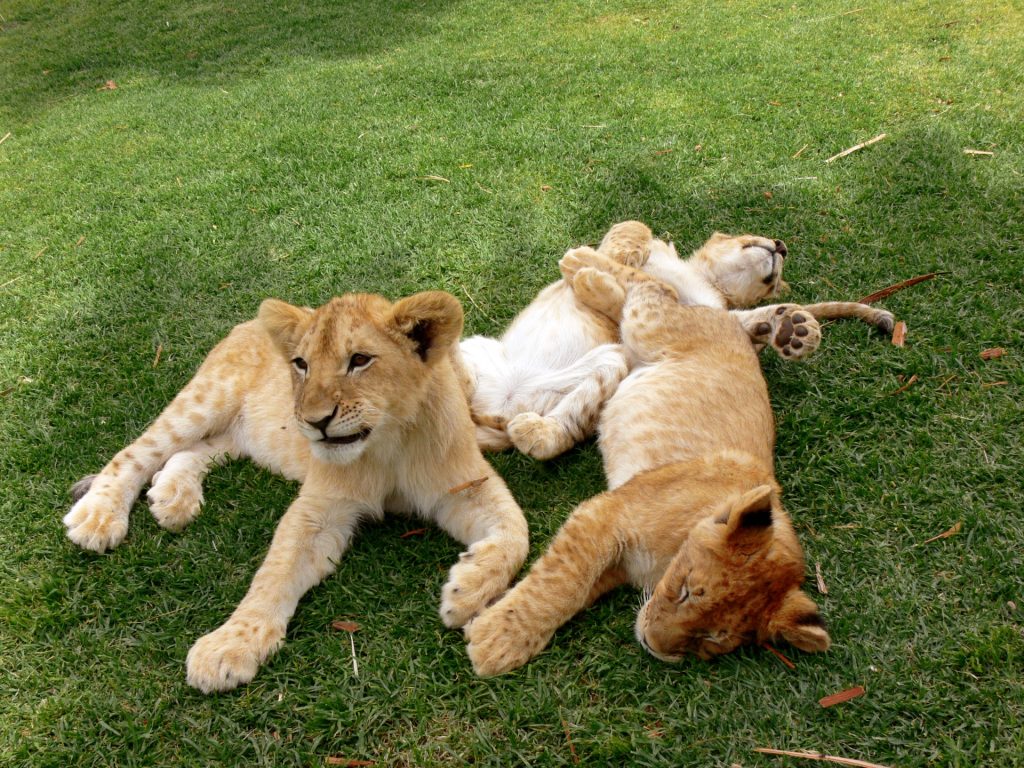
Most of the time of the cubs is spent learning the skills that they need to develop as King of the Jungle, particularly hunting, wrestling, and posing heroically for Disney cartoons (they actually are practicing in posing, but of course not because of Disney).
Most lion cubs will be able to take down their prey by the time they are two years old, and they will begin to develop sexually at that age.
The mane begins to grow on a male lion at this age, and they are usually kicked out of the pack.
The females will usually stay with a pack for their entire lifetime, but a nomadic male will wander alone until they eventually join with another male for hunting or take over as leader of another pack.
Female lions will have to go through lion “coming of age” tests, usually fighting the lionesses of their pride to show that they are able to run with the older lionesses. Those that fail the test usually become nomads, but those that pass the test are accepted into a lion pack for life.
Lion Facts on Physical Characteristics
The average male is roughly 2.7 meters (9 Feet) long, while the female is only 2.4 meters (8 feet) long.
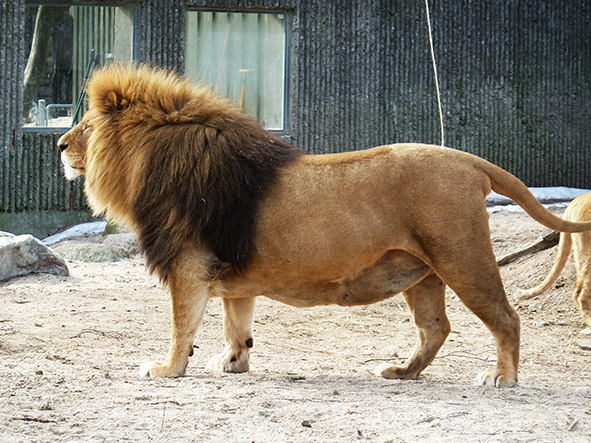
The male lion will weigh between 157 and 180 kilograms (350 to 400 pounds), while the female weighs between 112 and 138 kilograms (250 to 300 pounds).
The male stands 90 centimeters (36 inches) tall, while the female stands 75 centimeters (30 inches) tall.
The lion has 30 teeth in its mouth, teeth that are made for killing and eating prey.
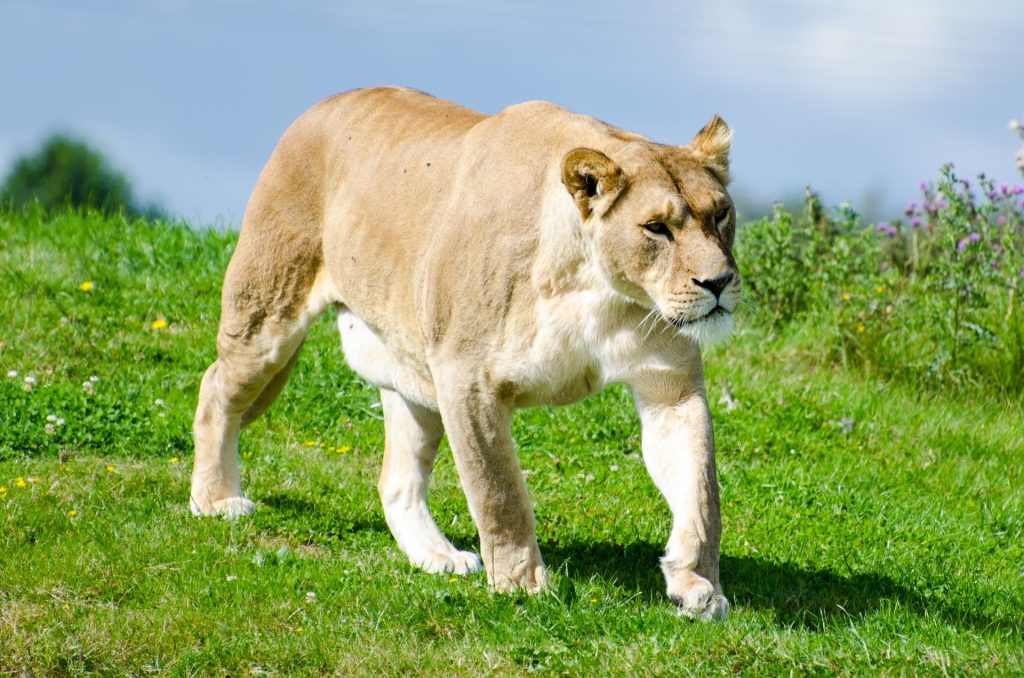
The Asiatic lion is generally smaller and with a smaller mane.
The average lion will live 12 years in the wild, and as many as 20 years if they are living in captivity. Females will usually live longer when they live in the wild.
The lion can run at 48 kilometers per hour (30 mph) over a distance of 46 meters (50 yards). A lion is able to jump up to 3.7 meters (12 feet) straight up in the air, and the longest recorded horizontal jump of a lion is 10.8 meters (12 yards).
The lion’s bone mass is less than that of others of the cat family, but is built with a very strong front body, and the lions have front body strength to rival any cat, including tigers, and one blow from their front paw is enough to break the back of a zebra.
The soft pads on the lion’s feet enable it to walk almost noiselessly, and the lions walk on their toes to be as quiet as possible when hunting. Lions have extra toe joints that give them a greater range of motion, and their claws are retractable. Their dewclaw is usually used to pick their teeth, and the lion’s claws can be up to 38 millimeters (1 ½ inches) long!
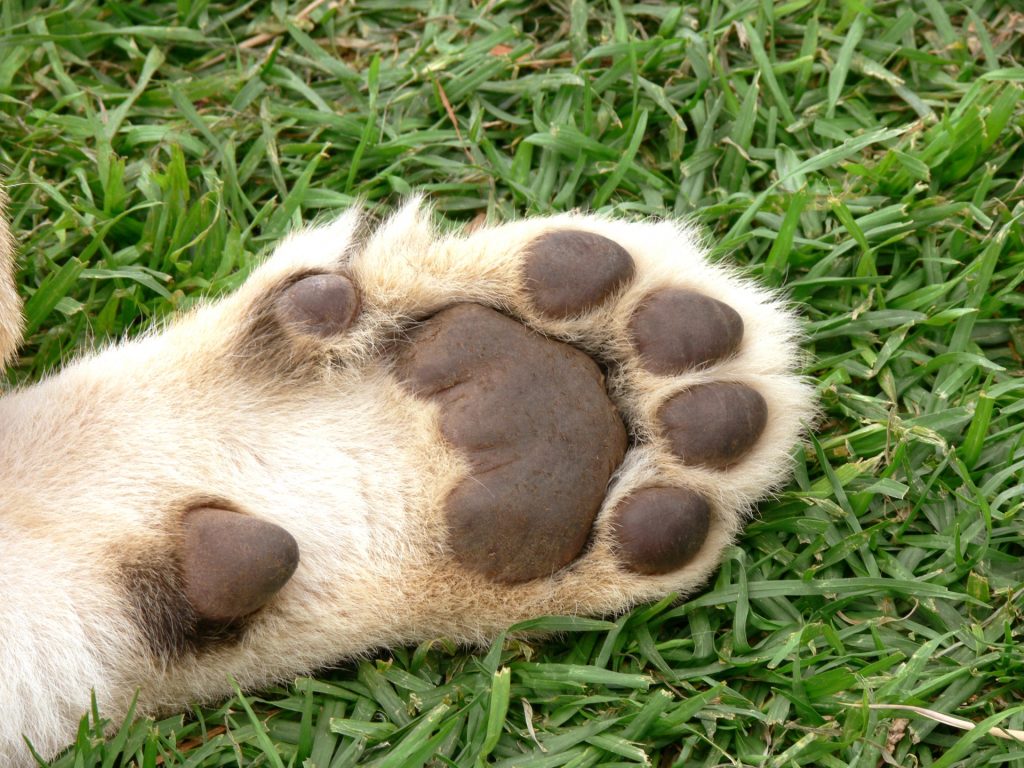
Lions’ bodies are covered with fur that is either a sandy brown or very rarely a shade of white, though there have been lions with very dark coats.
The male lion is easily recognized by his flowing mane of hair, and the color and abundance of the mane varies according to the lion in question.
Lions have very large eyes with round pupils, and their eyes are very good for seeing at night. Lions’ eyes are like cats in that they have a reflective coating that will help them to see with even a small amount of light at night.
Lions also have an amazing sense of smell, and they use scents to mark their territory.
They have average hearing, and they are the only members of the cat family with a tassel at the end of their tail. The tail helps to provide the lion’s balance.
The lion’s teeth, all 30 of them, are razor sharp and designed for ripping meat from the bones of its prey. The teeth are actually spaced perfectly that they are able to slip between the vertebras of a lion’s prey in order to cut the spinal cord, but lions cannot move their jaw from side to side.
Lions have a digestive system similar to that of humans.
Lion Habitat
Despite the fact that most lions are known as the King of the Jungle, lion facts will tell you that lions don’t live in the jungle.
African lions live in the savannah and grasslands of Africa, though lions have lived in parts of the world between India and Greece.
Lions prefer the grasslands to the jungle, though they always seek the shade of trees under which to relax and enjoy an after-lunch nap. Lions also live in dense bush, as well as the woodlands of Central Africa.
Most lions are found mainly in the southern parts of the Sahara desert, though lions can be found in parts of South and Eastern Africa.
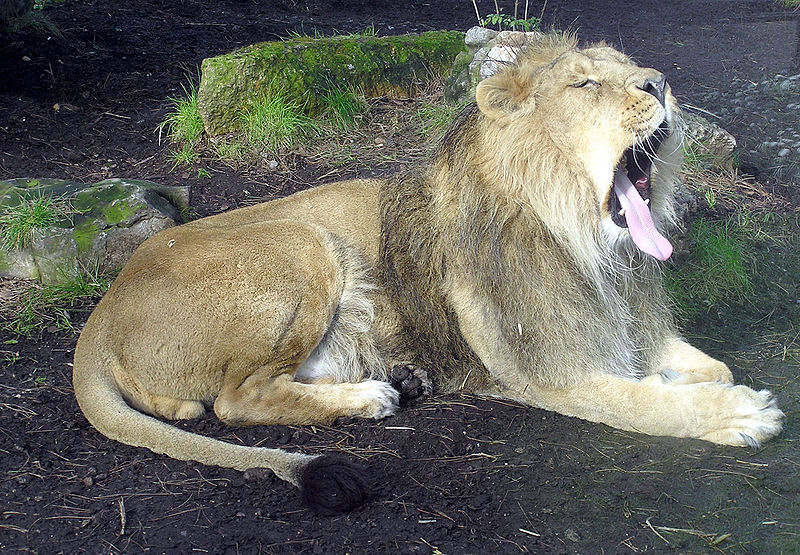
There is a small lion population in India, though these Asiatic lions are nowhere near as common as they once were.
What do Lions Eat?
Lions actually eat pretty much anything they can sink their teeth into.
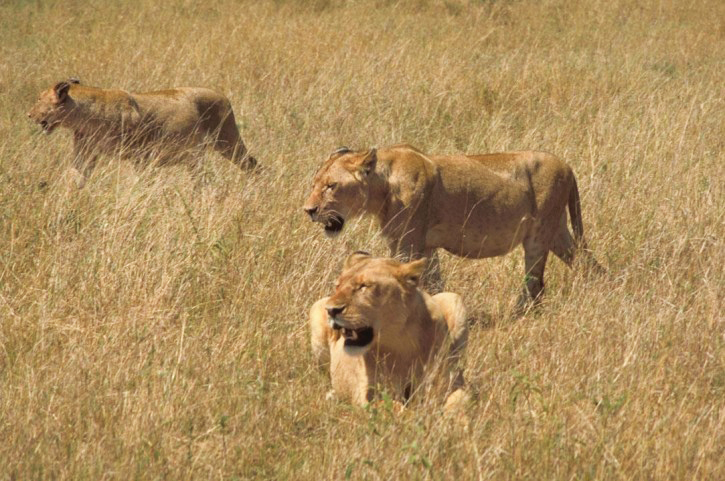
Most lions will work together with other lions to bring down large game, such as buffalo, zebra, gazelles, waterbuck, antelope, or wildebeest.
Lions will try to hunt bigger game that can feed more lions with less effort, and their typical prey will usually weigh around 112 kilograms (250 pounds). Larger animals are hunted under the right conditions, and some lions will even hunt hippopotamuses and elephants.
Lions will turn to hunting smaller animals when their favorite dinner is not readily available, and they may even turn to hunting crocodiles when they are desperate.
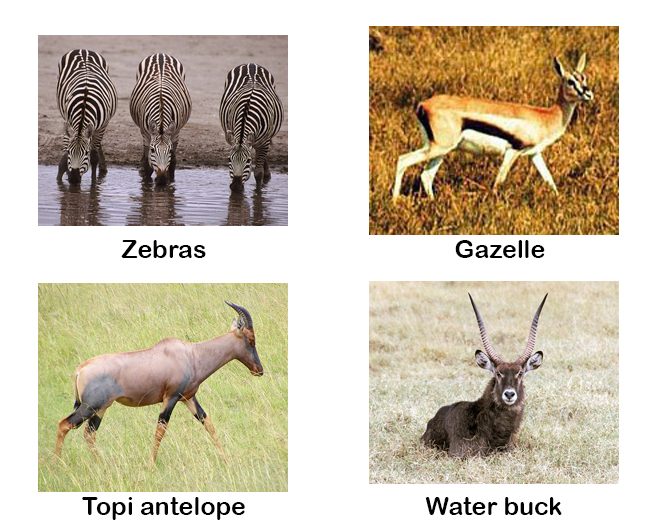
Lions often scavenge food rather than hunt, and roughly 40% of their food is stolen from other predators or simply found.
Lions may be the largest hunters, but they are not the best in their ecosystem.
They usually hunt in groups, but they fail to hunt as intelligently as other predators like the cheetah.
An average lion will only kill 15 to 20 large herbivores in a given year, and lion’s hunting doesn’t have as large an impact on their ecosystem as you might think. They mainly thrive because there is such an abundance of food around them.
Most of the hunting done by the lions happens in the early morning or in the night when the lions have a significant advantage as they can see their prey without being spotted.
Few lions will hunt during the day, as it is much more likely that their prey will spot them. Lions also avoid hunting during the hot parts of the day, as they need to save energy.
They may hunt during the day, but they will usually only make a kill if they stumble across a solitary animal that they can catch by surprise.
The lions will hunt together, using their younger lions to push their prey towards the more experienced hunters who lie in wait.
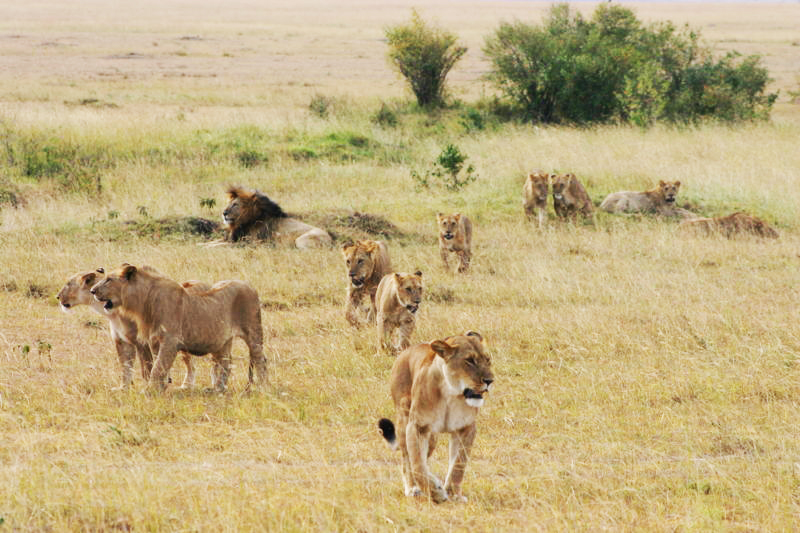
The lions will usually jump on the backs of their victims to bring them down, and only then will they kill them.
Lions will usually suffocate their victims by clamping its mouth over the mouth and nose of its prey, and sometimes the other lions will tear into the abdomen of the prey as it is dying. A lion can do serious internal damage to an animal with a powerful blow of its paws, or the lions will jump on the back of their prey and bite the back of its neck to cut the spinal cord with its teeth. Lions will sometimes break the neck of its prey by grabbing them around their neck and flipping the body over.
Lions normally fight over their food, and they will usually eat lying down or crouching rather than standing.
They have poor manners, and will eat as much as they can hold. An adult male can eat up to 34 kilograms (75 pounds) of meat in one sitting, and they will sleep for as much as 24 hours once they have finished devouring their kills.
Lions may not end up eating the entire carcass of their prey, but may only eat as much as they can and leave the rest for other scavengers.
The strongest lions always get the choicest parts of the dinner.
One of the most interesting lion facts is that lions actually have a posture that tells other animals that they are not hunting, and thus they can walk around without the other animals being afraid of them.
Most animals will be partly wary when lions pass, but their non-threatening posture will indicate to other animals that they are not on the prowl for their next dinner.
Lion Information on Breeding
Lions become sexually mature at the age of 2 or 3 years old, and males will usually go off looking for their own pride when they reach this age, so the original pride will then consist of related females and 1-2 males.
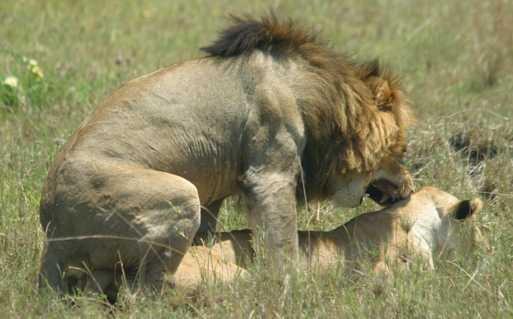
The females will breed with the males of their pride, primarily the dominating male, though the occasional female will wander away from its pride. Nomadic males and females will often hook up and start their own prides.
Mating between lions is just about the same as the mating of any other cats. Female lions may go into heat any time of the year, though peak mating periods are different in the various regions of Africa. Female lion facts say that a lioness can be in heat for 4 to 8 days, after which time their bodies will wait 90 days before going into heat once more.
Biting, pawing, and growling indicate the onset of the mating.
The copulation act itself takes no more than 10 seconds, after which time the male bites the female’s neck to indicate “he is done”. The female will then bare her teeth at the lion male.
This happens every 20 or so minutes, and can happen as many as 40 times in a single day. Many females will mate with a number of males during her estrus, and thus the cubs in her litter may have different fathers.
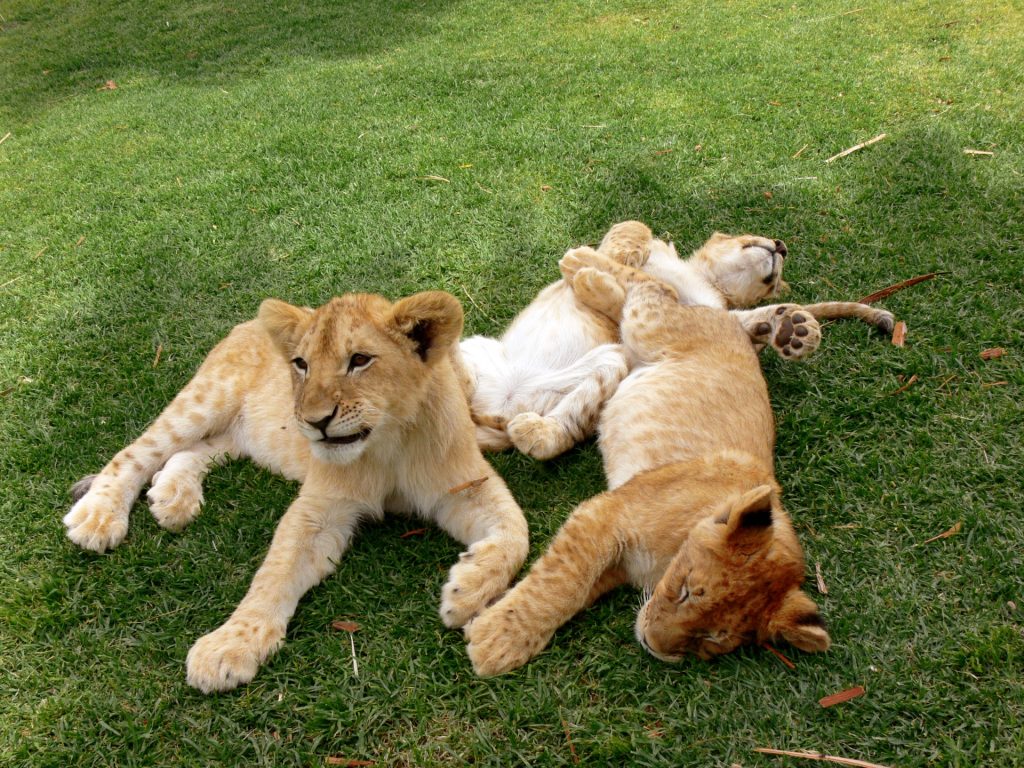
Lionesses will occasionally go into heat all at the same time when a new male lion takes over the pride. This helps to shorten the amount of time it takes for a new generation of cubs belonging to the dominant male to be born, and it helps to secure the upbringing of the cubs.
Cubs born later will have problems getting food enough, as they are the last to eat.
Lions Social Lives
There are two types of social groups of lions.
Those that live with other lions are called residents, as they are part of a pride, or group, of many lions.
Other lions that roam on their own are called nomadic lions, and they tend to move around far more than resident lions in a pride.
The area occupied by a pride is called the pride area, while a nomadic lion only has a range.
Lionesses are the working ones of the pride, as they do most of the hunting. This is partly due to the fact that the manes of the males cause them to overheat when they run too much, and the lionesses usually work together much more efficiently to bring down their prey. However, males nearby the kill will usually take over the kill from the lionesses, and they will always eat first.
Both sexes defend the pride from outsiders. Some of the lions will stay behind to defend the young while others lead the charge against the offenders, and lions will usually take on specific roles in their pride.
Female lions will usually form a social unit in the group and will work together, while the one dominant male will control the group.
Lion Killers
There are few animals who are able to threaten lions, as they are some of the largest predators on the savannah.
Lions will usually steal the kills of hyenas, and hyenas respond by mobbing lions that threaten them.
Lions will usually kill other predatory cats, and they will usually kill African wild dogs as well.
The crocodile is the only predator that can threaten the lion and take away its prey, though it largely depends on the size of the lion and croc in the fight.
The elephant is easily able to kill a lion, but will only do so when extremely threatened. The rhinoceros and hippopotamus are also able to take down a fully grown lion, but both animals will not attack unless they are provoked or feel in danger for their lives.

The main killer of lions in the world is humans, as most lion facts will tell you.
Humans will usually kill lion as vermin, while some humans will even go as far as to poach lions.
Most hunters will usually kill male lions in order to take their manes. When this happens, a new lion male will dominate the pack and will actually often kill the male lion cubs.
This prevents the pride from being able to produce new adults for a year and a half or more, which has seriously decimated the population of lions in the world.
Habitat destruction is another of the main things that threatens lions on the savannah, and even certain diseases have contributed to the deaths of thousands of lions in recent years.
FIV is the feline version of HIV, and it, along with tuberculosis and canine distemper, has drastically reduced the number of lions currently found in the world.
Lion vs Tiger
Lions and tigers have often been pitted against each other in captivity for sport, and they sometimes face off in the wild as well.
This happened in Asia, where the Asiatic lion would face the tiger in the lands of India.
A large Asian tiger will weigh as much as 50 kilograms (110 pounds) more than an Asiatic lion.
However, tigers prefer to hunt alone while lions hunt in prides. Tigers are a lot quicker and lither than lion, and thus they are much more adept at taking down their prey.
The male tigers will hunt, while male lions prefer to look fierce and let the lionesses hunt.
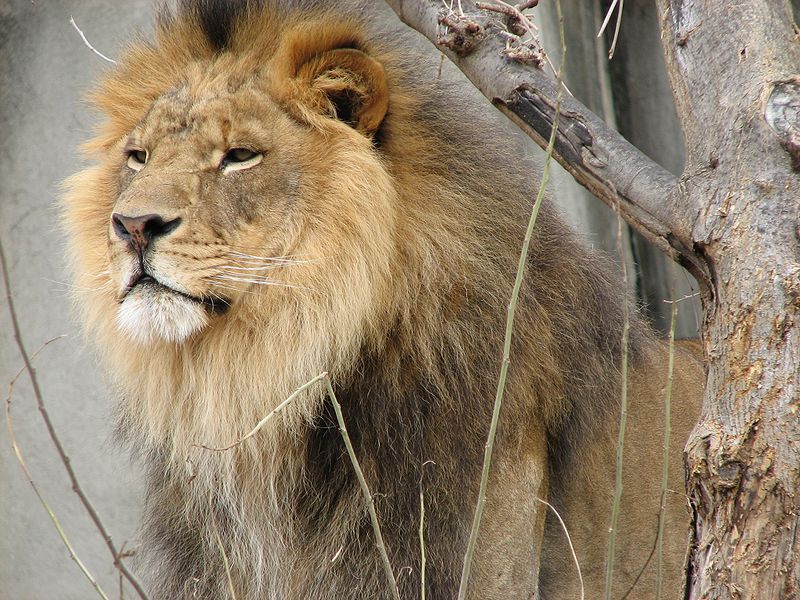
There have been a number of fights between lions and tigers in captivity, but both lions and tigers have won out against the other animals according to lion facts on Wikipedia.
In Africa, lions are considered the King of the Beasts, but the tiger is king in Asian countries like India and China.
More Random Lion Facts:

A lion will copulate an estimated 3,000 times for every lion cub that reaches 1 year of age.

Lions have sweat glands, but they will usually pant 200 times a minute to lower their body temperature.

Female lionesses do the hunting because the males overheat when they run a lot, due to their large mane

Lions can actually be identified by their unique whisker spot patterns.

Lions will drink water as often as they can, but they can go for 4 or 5 days without water if need be.

All of the females in a lion pride are related.

Lions will usually sleep up to 20 hours per day. (What a life!)

Lions can copulate up to 100 times within a 24 hour period.